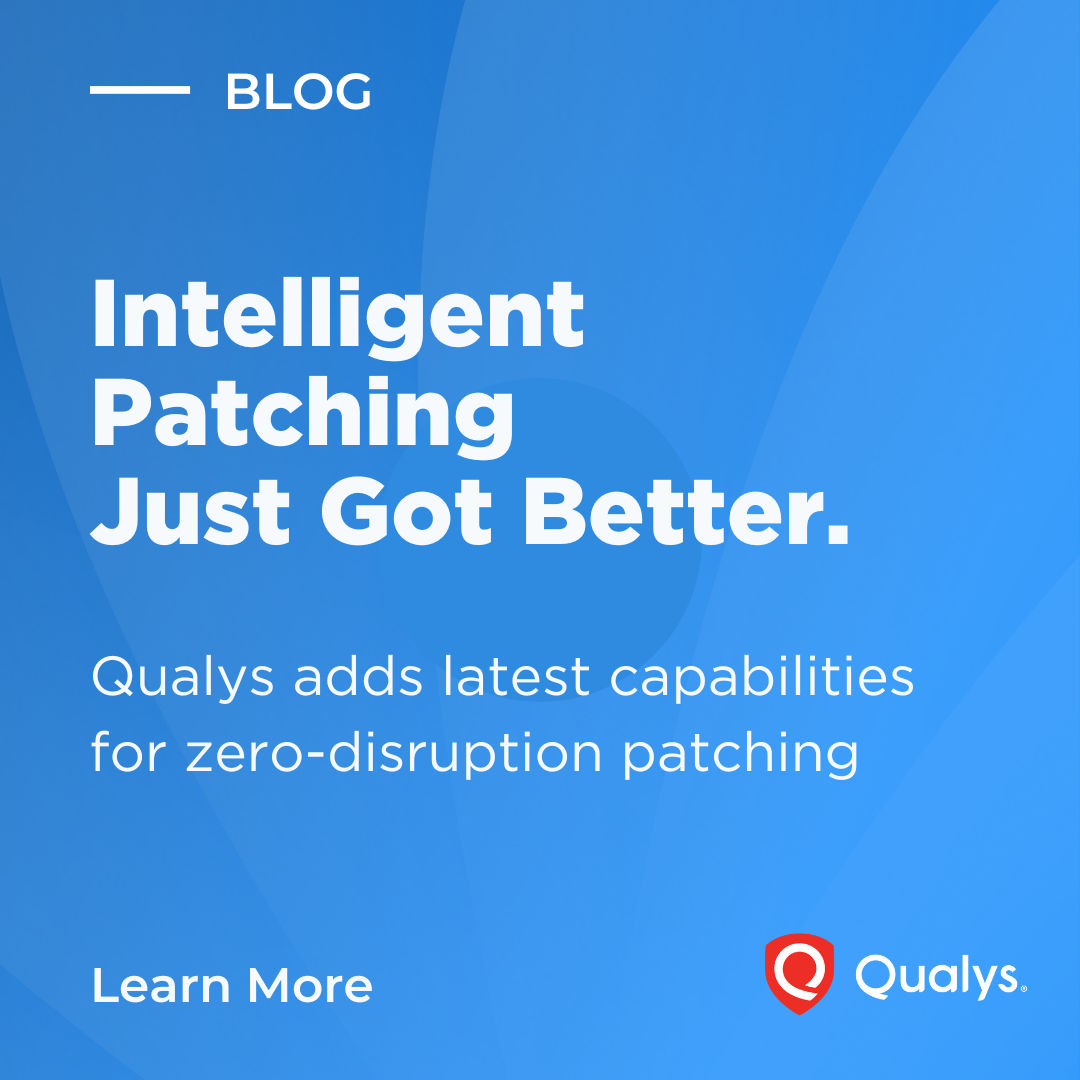Keeping systems patched is essential, but doing it efficiently and confidently is what sets great IT operations apart. With the latest capabilities in Qualys Patch Management, you can achieve just that.
The most recent advancements in Qualys Patch Management – Intelligent Job Chaining and Pre-condition Checks – empower IT teams to patch with greater efficiency and confidence. Pre-condition Checks validate system readiness before deployment, ensuring updates apply smoothly without unexpected issues. Intelligent Job Chaining automates patching sequences, streamlining workflows and reducing manual effort. Together, these enhancements provide IT teams with the control, visibility, and resilience needed to manage patching proactively and keep environments secure.
Intelligent Job Chaining in Qualys Patch Management
In modern IT operations, automation must be intelligent. Especially in patching critical infrastructure, we must go beyond “install-and-forget” with control, visibility, and the ability to conditionally execute actions based on real-time feedback.
The Chaining of Jobs capability in Qualys Patch Management delivers precisely that. It allows a job to execute only if the conditional check on the post actions of a previous job is met.
Use Case 1: Validating service function before patching the application tier (Linux)
Scenario
In a production environment running on Red Hat Enterprise Linux (RHEL), a three-tier web application stack is deployed. The Web Tier, which has OpenSSH, is scheduled for patching due to recent vulnerability disclosures in the web server packages. To minimize disruption, the Application Tier must only be patched if the Web Tier is healthy, i.e., the patch is applied and the updated OpenSSH service is running successfully.
This conditional logic ensures that the service is available and that rollout happens only when upstream services are verified.
Goal
Patch the Linux Web Tier, confirm that the OpenSSH patch is applied and the service is back up, then proceed with patching the Application Tier.
Such conditions ensure that the Web Tier is operational before impacting downstream tiers. They also increase confidence in multi-tier patch rollouts without requiring manual checkpointing.
Use Case 2: Conditional patching of executive laptops based on pilot success
Scenario
Your security team mandates an urgent rollout of a patch fixing a critical zero-day (e.g., CVE-2025-12345) in Microsoft Edge. However, given the sensitive nature of executive laptops and their diverse environments, a full rollout without testing could potentially risk unstable performance.
Goal
Patch two test laptops and verify that the patch is applied. If successful, proceed with patching all executive devices.
In environments running both Linux and Windows workloads, consistency in validation is critical. Whether you’re patching IIS on Windows or OpenSSH on Linux, Qualys Patch Management’s job chaining with post-action scripting lets you orchestrate patch pipelines with built-in checkpoints.
Patching with confidence means knowing services are updated and available. With Qualys Patch Management capabilities, you automate responsibly across every OS and stack.
Preventing Disruptions with Pre-Condition Checks
The new feature of Pre-Condition Checks enables administrators to check system readiness with a specific exit code before patch deployment. If the script detects unsuitable conditions, it can return a specific exit code (12) to prompt the system to cancel the patch job for that endpoint.
This pre-check will ensure patches are applied only when the systems are stable and patchable. Whenever exit code (12) is returned from the pre-action script, the system will dynamically abort a patch job before any patches are deployed.
At the outset, even though this may look like a simple addition of just one exit code, pre-condition checks can have an outsized impact on your uptime, compliance, and operational resilience.
The Hidden Cost of Blind Patching
Let’s examine two real-world scenarios from different industries that show the practical power of this capability and the hidden cost if patching proceeds without context awareness.
Use Case 1: Banking application servers in recovery mode
Scenario
Financial institutions rely on the high availability of application servers for critical operations. These servers may enter a “Recovery Mode” in case of a crash or during database synchronization. If an emergency patch is applied during this period, it can disrupt recovery processes and compromise data integrity.
Business Impact Avoided
By avoiding unplanned downtime of transaction nodes during business recovery, one large bank estimates saving $15,000–$20,000 per incident, including rollback time, lost processing, and SLA penalties.
Use Case 2: EMR servers during backup windows
Scenario
In the healthcare industry, providers utilize Electronic Medical Record (EMR) systems. These systems undergo regular backups, and patching during these backup windows can interfere with data integrity and system performance.
Benefits of Pre-Condition Checks
Pre-condition checks also offer broad benefits across industries, avoiding costly disruptions and enhancing overall system reliability.
- Operational Stability: Prevents disruptions by ensuring patches are applied only when systems are ready.
- Data Integrity: Avoids potential data corruption during critical operations like recovery or backups.
- Compliance Assurance: Aligns patching activities with organizational policies and regulatory requirements.
- Resource Optimization: Reduces the need for manual interventions and potential rework due to failed patching.
Take a Smarter Approach with Qualys Patch Management
With Pre-Condition Checks and Intelligent Job Chaining, IT and Security Operations teams gain the ability to make data-driven decisions before, during, and after patch deployment. These capabilities reduce risk, minimize downtime, and strengthen compliance, empowering teams to patch confidently across complex, multi-tier environments.
In a world where uptime and integrity matter, smarter patching isn’t optional: It’s essential.
For more information on these features and relevant documentation, please refer to the Pre and Post Action Documentation section.
Is your patching strategy aligned with business risk priorities? Discover how TruRisk™ Eliminate can help.







